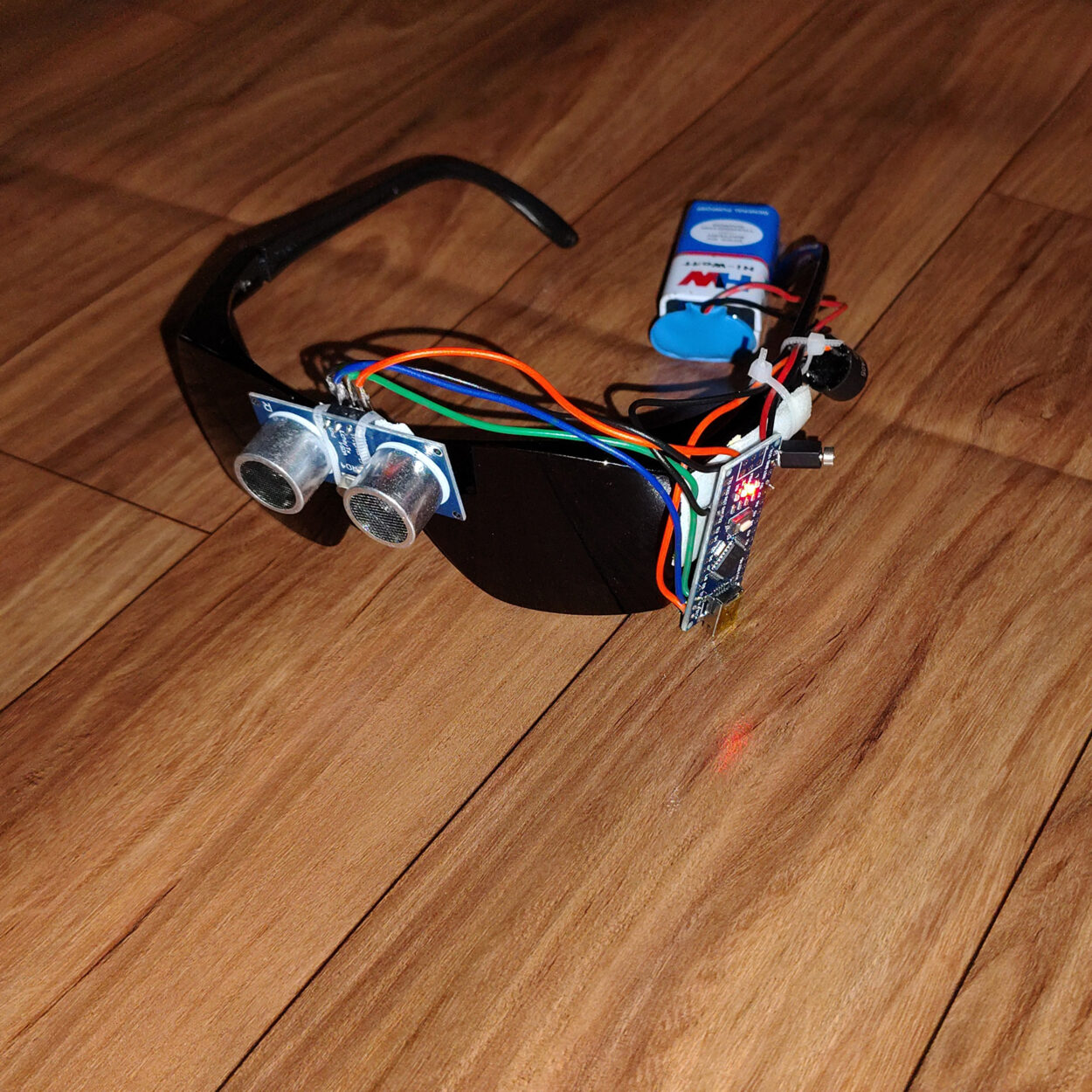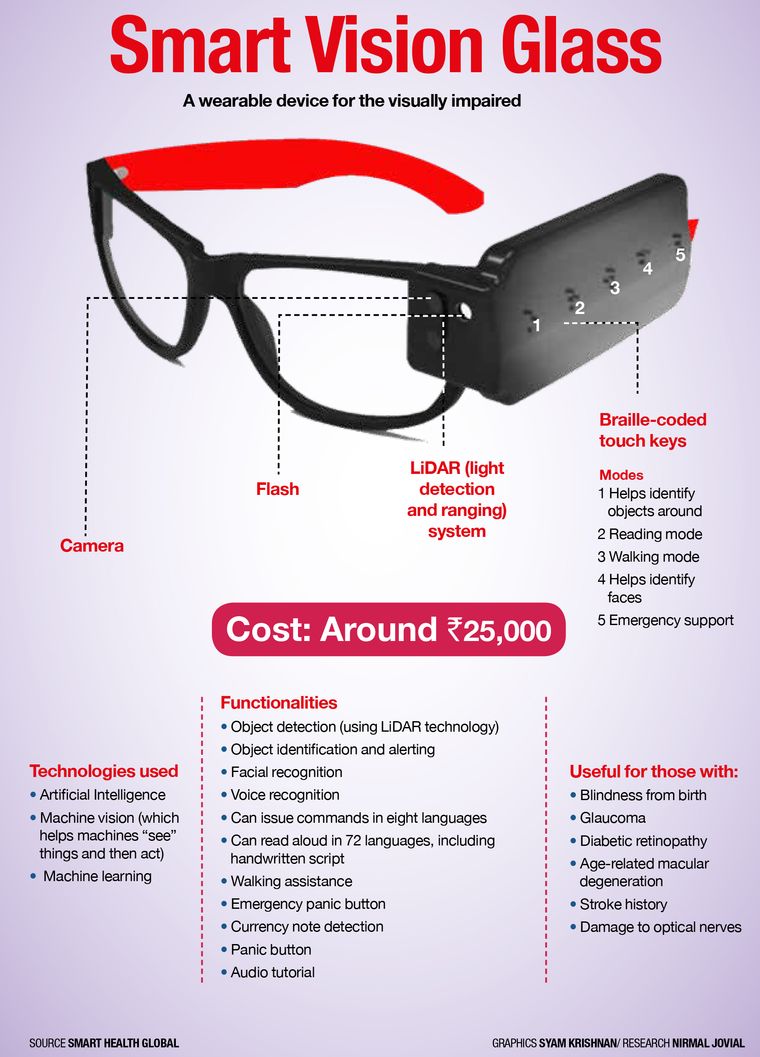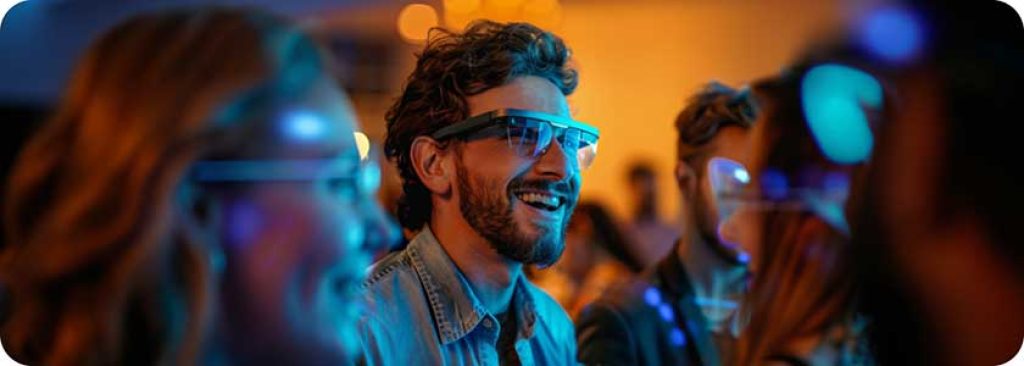Wearable Technology for Low Vision: Transforming How We Navigate the World
Wearable Technology for Low Vision: Transforming How We Navigate the World
Blog Article
Discover Advanced Assistive Tools for People With Aesthetic Problems
The landscape of assistive innovation for individuals with visual disabilities is progressing swiftly, offering an array of cutting-edge tools that boost freedom and involvement (Braille displays and notetakers). From smart glasses that seamlessly combine visual input with acoustic advice to sophisticated navigation applications that redefine spatial recognition, these tools are reshaping possibilities. The most current improvements in Braille innovation and voice-activated systems considerably add to accessibility. Nonetheless, the implications of these developments expand far beyond mere functionality; they challenge traditional understandings of impairment and self-reliance. What might this indicate for the future of inclusion and support?
Smart Glasses Innovations
Smart glasses stand for a significant improvement in assistive modern technology for individuals with aesthetic impairments. Equipped with video cameras and sensing units, wise glasses can capture real-time aesthetic details, which is then refined and shared to the user via audio responses or haptic experiences.
Moreover, innovations in fabricated knowledge have additionally improved the abilities of smart glasses. Equipment understanding algorithms can recognize faces, reviewed text, and recognize items, making them very useful devices for day-to-day jobs. Users can obtain acoustic cues that give context about their atmosphere, fostering freedom and self-confidence.
Additionally, the ergonomic style and lightweight nature of lots of smart glasses make them suitable for long term usage, making sure convenience while enhancing capability. As these tools remain to progress, they hold the prospective to reinvent the way people with visual disabilities experience their lives, connecting the space in between access and innovation. The recurring r & d in this field promise to increase the possibilities for clever glasses, making them a necessary component of modern-day assistive gadgets.
Navigating Apps and Tools
Many navigating apps and tools have actually become vital sources for individuals with visual problems, significantly enhancing their capacity to traverse strange environments. These innovations utilize general practitioner performance, audio cues, and real-time data to supply customers with exact navigation aid.
One prominent example is the Aira application, which links customers to experienced representatives who can offer visual descriptions of surroundings and navigation support with a real-time video clip feed. This solution boosts the individual's spatial understanding and confidence while navigating. An additional noteworthy device is Seeing Eye GPS, which offers voice-guided navigating and sights, allowing users to gain access to essential information about their surroundings.

As technology continues to breakthrough, the development of extra advanced navigating devices assures to more empower people with visual disabilities, assisting in seamless wheelchair and assimilation into varied settings. Such technologies contribute in promoting a much more inclusive society.
Braille Modern Technology Improvements
In recent years, developments in Braille technology have significantly transformed how individuals with aesthetic impairments accessibility details and engage with the world around them. The development of mobile Braille displays has revolutionized analysis by enabling customers to attach wirelessly to smartphones, computer systems, and tablets. These devices transform text into Braille in real-time, enabling seamless interaction with electronic material.
Furthermore, innovative Braille printers have actually emerged, boosting the manufacturing of tactile products. Modern embossers are faster and much more reliable, enabling for the fast development of Braille documents and academic materials. This performance decreases the time and expense associated with generating Braille sources, making them much more obtainable to organizations and institutions.
Furthermore, the combination of Braille with other modern technologies, such as man-made knowledge and artificial intelligence, has opened up new avenues for tailored knowing experiences. Voice acknowledgment and synthesis innovations can match Braille, providing a comprehensive method to details circulation.
As the need for inclusive education and learning and office settings expands, these technological developments play a crucial function in equipping individuals with visual problems, guaranteeing they have equivalent accessibility to info and chances in different aspects of life.
Wearable Tools for Freedom
An expanding array of wearable devices is enhancing independence for individuals with visual problems, supplying innovative remedies that boost navigating and day-to-day living. Braille displays and notetakers. These tools make use of innovative technologies to offer real-time responses and assistance, advertising autonomy in various settings

Wearable innovation also consists of smartwatches that can be programmed with ease of access functions, making it possible for customers to obtain notifications, track their locations, or perhaps require help with the touch of a switch. Additionally, some tools integrate synthetic knowledge to examine the environment, offering sound summaries of nearby objects or individuals.
Voice-Activated Assistive Solutions
Leveraging voice-activated assistive solutions has changed the landscape of assistance for individuals with visual impairments, providing hands-free interaction and access to a selection of jobs. These innovations utilize all-natural language processing and expert system to enable customers to perform everyday tasks with straightforward voice commands.

Additionally, recent innovations in voice acknowledgment precision have boosted the customer experience considerably, fitting diverse accents and speech patterns. This inclusivity ensures that more people can take advantage of these technologies, promoting a greater feeling of freedom.
Final Thought
Finally, the growth of advanced assistive gadgets significantly improves the freedom and lifestyle for people with aesthetic disabilities. Technologies such as smart glasses, navigating applications, Braille technology, wearable tools, and look what i found voice-activated remedies jointly promote an even more comprehensive environment. These technologies empower individuals to browse their environments with self-confidence and engage more completely with the globe, ultimately advertising greater ease of access and equivalent chances for people facing aesthetic challenges.
The landscape of assistive innovation for people with visual problems is advancing swiftly, providing a variety of innovative tools that improve freedom and engagement.Smart glasses stand for a Continue significant development in assistive innovation for people with aesthetic impairments. As these tools proceed to develop, they hold the potential to transform the method individuals with visual disabilities experience their day-to-day lives, bridging the space between accessibility and innovation.In current years, advancements in Braille technology have significantly transformed just how people with visual disabilities access details and involve with the world around them. These modern technologies empower individuals to navigate their surroundings with confidence and involve more completely with the world, ultimately promoting higher ease of access and equal chances for people encountering aesthetic challenges.
Report this page